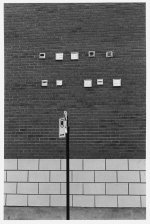R
rich815
Guest
f/stopblues said:I managed to shoot a roll of HP5+ in 120 at iso50 the other week. I was juggling a Holga with the HP5+ and my Bronica with Velvia 50. I only have one light meter 🙁
I haven't been brave enough to try developing it yet. It seems there's not much info out there for pulling HP5+ to iso50!
The late, great Barry Thornton always felt the the "true" speed of HP5+ was more like EI160, and he was no slouch when it came to films, development and such. He reported and showed great success with HP5+ at EI160 in Perceptol 1:2 for 11 1/2 minutes at 24C. So, you may not be as far off as you fear. Perhaps that developer and time will give you a good idea where to start and adjust from there. I'd say maybe 8-9 minutes?
Perceptol is great stuff by the way.


